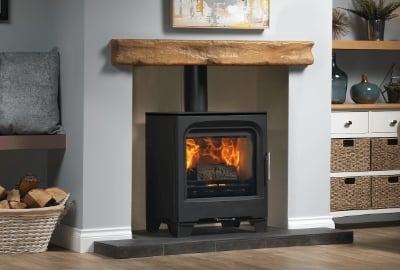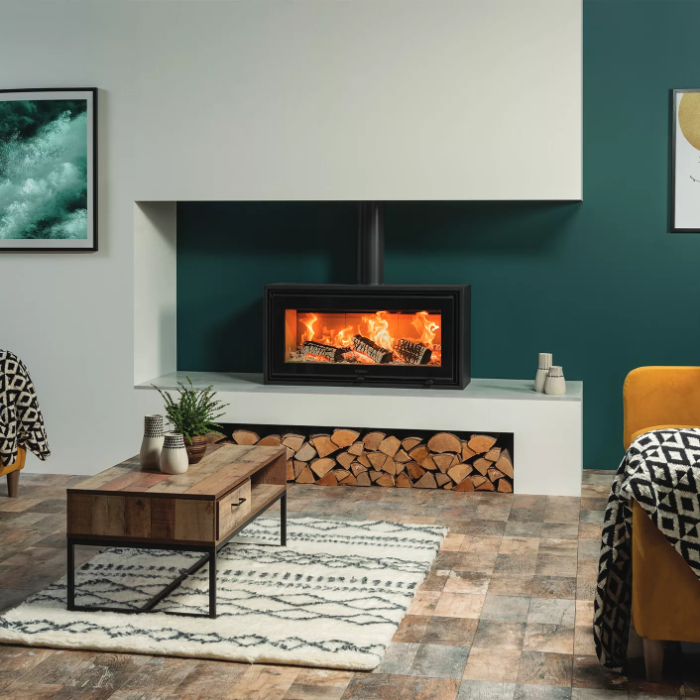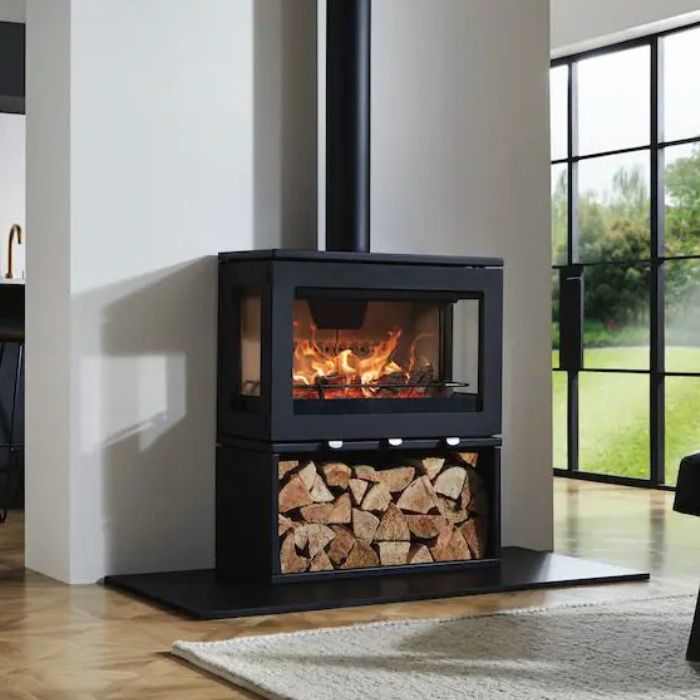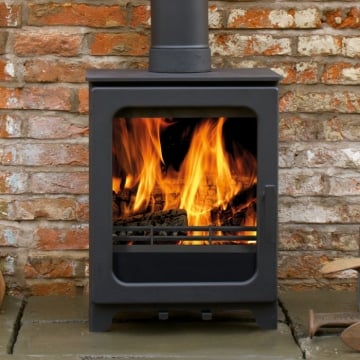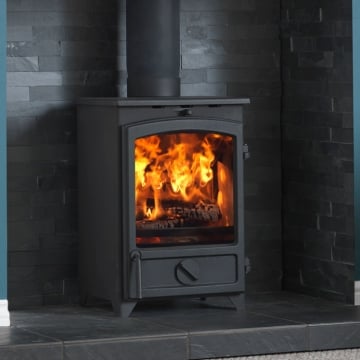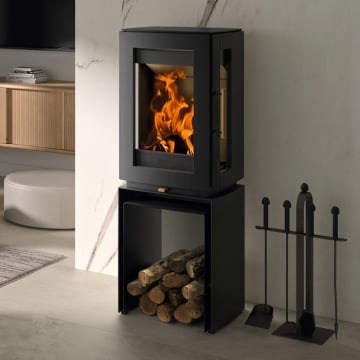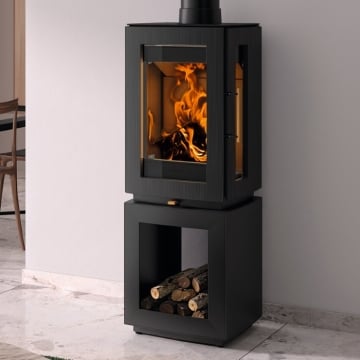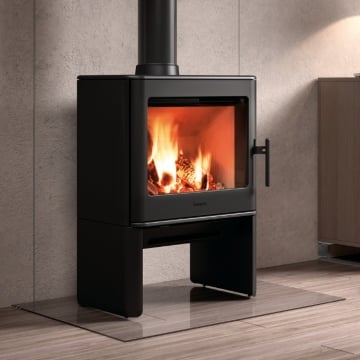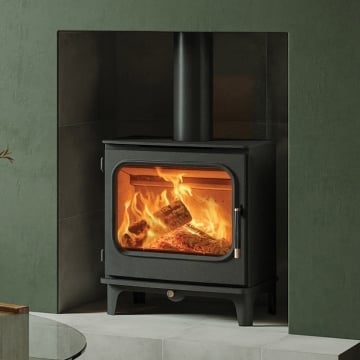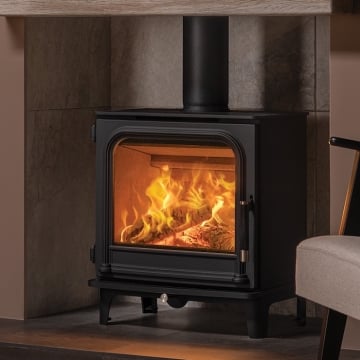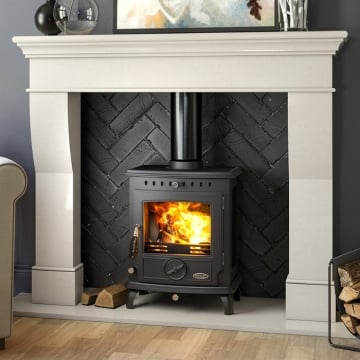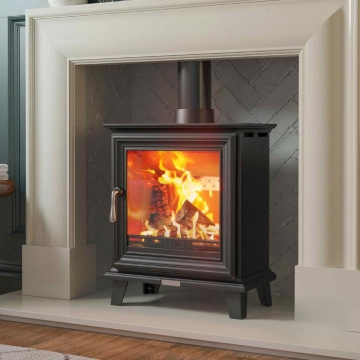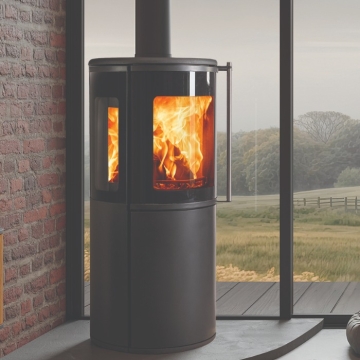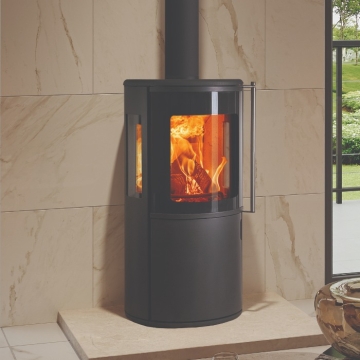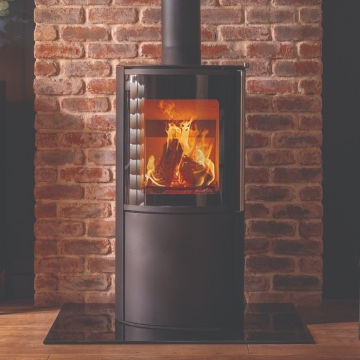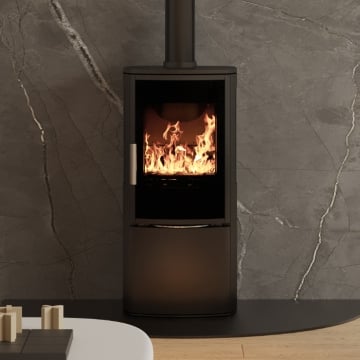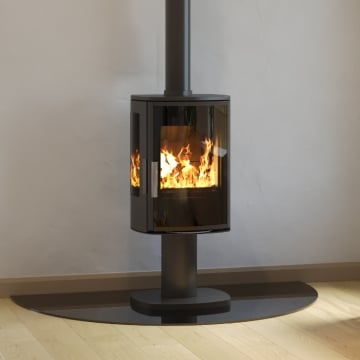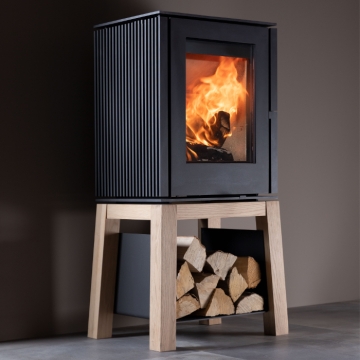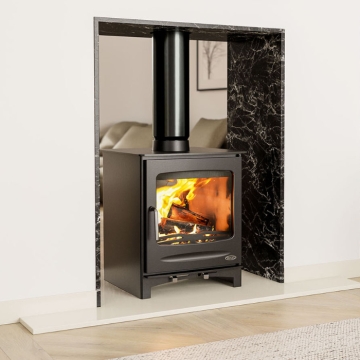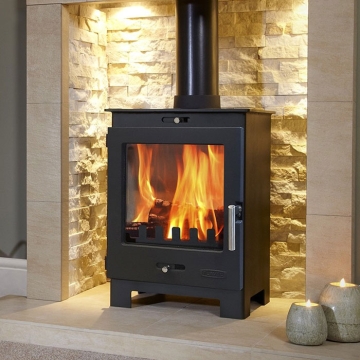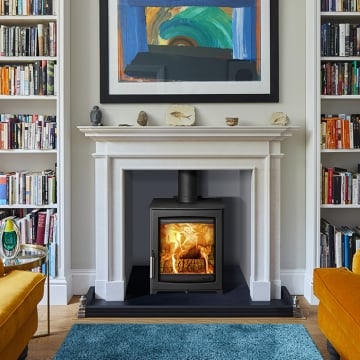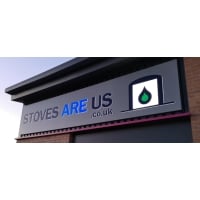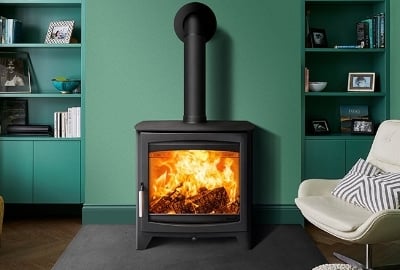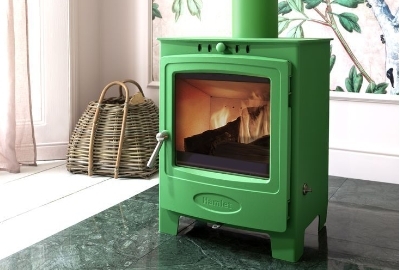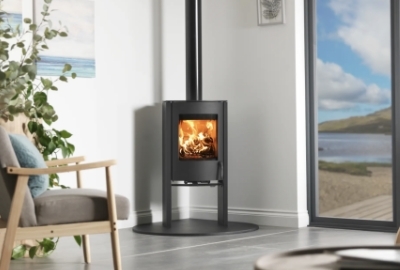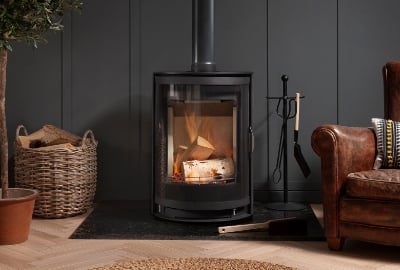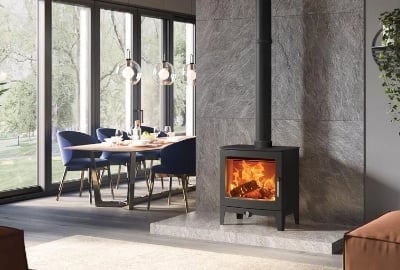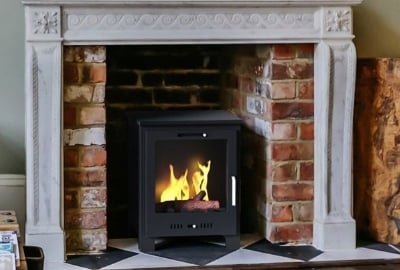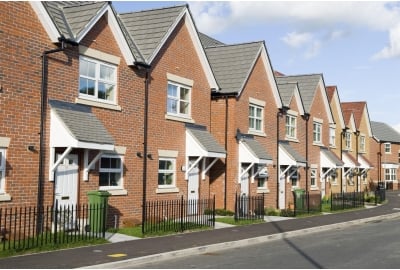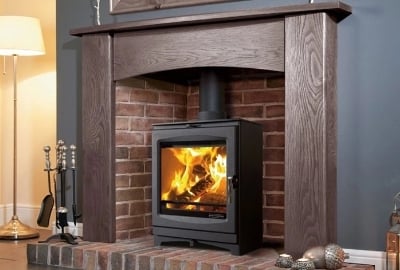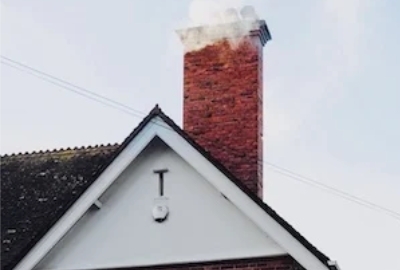Wood burner manufacturers and stove retailers alike understand that at the very core burning wood there is a release of emissions. But when we talk about air quality and health both Ecodesign stoves & Defra Approved stoves offer huge advantages over older log burners and open fires. In this edit, we’ll answer all of your questions about indoor air quality, environmental impacts and best practices for burning wood within a wood burning stove.
Contents
How does a wood burner impact my indoor air quality?
Which are the cleanest wood burning stove in the UK?
How wood burners minimise environment impacts
Can I burn pallet wood on a log burner?
Is it better to burn firewood or smokeless fuel?
How does a wood burner impact my indoor air quality?
It is widely know that there are other sources of indoor pollution that have a much greater impact on the indoor air quality of your home than a log burner. But to ensure you keep your indoor air quality as pure as possible we’ve put together some helpful tips and guidance when using or buying a wood burning stove.
Following these steps will ensure your new wood burner is performing at the highest level when it comes to efficiency and low emissions. So if you’re using a wood burner or thinking about buying one you can help improve your indoor air quality by:
- Upgrade to an Ecodesign stove or fire
- Refuel your stove using dry firewood and/or authorised fuel
- When opening the door do so carefully and slightly (using a stove gloves) and allow the pressure to equalise. This will prevent the possibility of smoke spilling into the room
- Use the top down method when lighting your stove. This involves placing the larger logs at the bottom and starting the fire on top with the smaller pieces of kindling
- Keep the stove door closed at all times other than refuelling
- Ensure you buy the right size stove with the perfect heat output for your room
- Avoid having any extraction systems like a kitchen extractor installed within a close proximity of the log burner or fire.
Which are the cleanest wood burning stove in the UK?
In the UK, the cleanest wood-burning stoves are those that meet stringent emissions standards and are certified for their low environmental impact. These stoves are designed to burn firewood more efficiently, producing less smoke and fewer pollutants. Here are some key features and examples to look for when buying a wood-burning or multi-fuel stove.
DEFRA Approval: The UK Department for Environment, Food & Rural Affairs (DEFRA) certifies stoves that meet low emission standards for use in smokeless zones. DEFRA-approved stoves are designed to produce lower emissions and are suitable for urban and suburban areas with restrictions. If you’re interested in knowing whether you live in a smoke control zone you’ll need to contact your local council.
EcoDesign Ready: EcoDesign is a European standard that sets strict limits on emissions and efficiency. Eco stoves are designed to be environmentally friendly, with reduced emissions and improved efficiency compared to older models. Recent studies by KIWA GASTEC have found that Ecodesign stoves can offer a 90% reduction in particulate emissions compared to an open fire and 80-94% compared to an old stove.
Efficiency: Look for wood burners with high-efficiency ratings. More efficient stoves burn wood more completely, which reduces the amount of smoke and pollutants produced. Most new generation log burners should have a fuel efficiency rating of 75% or higher and an energy efficiency rating of either A or A+.
Secondary Combustion: Many modern stoves feature secondary combustion systems that burn off additional gases and particulates, leading to cleaner emissions. A secondary combustion system works when preheated air ignites the smoke gases above the burning fuel, such as wood.
Some great examples of clean burning and eco friendly log burners include highly rated brands like Stovax, Arada, Parkray, Woodpecker and Charlton & Jenrick, these brands are well-known for their efficiency and low emissions.
How wood burners minimise environment impacts
One of the great advantages of a log burner over other heating appliances is that they come fitted with a solid glass fronted door, this ensures the combustion process is confined within the firebox. All the unwanted gas emissions and smoke, exit through the flue pipe or chimney thanks to the enclosed design and advanced firebox. A more complete combustion of fuel significantly reduces emissions that are released into the air, look out for wood burners that feature secondary burn technology as this can help to have a huge impact on improving air quality.
Can I burn pallet wood on a log burner?
Burning pallet wood in a wood-burning stove is not recommended for several reasons. As a responsible retailer we have a goal to help improve air quality so we do not recommend burning anything other than authorised fuels and seasoned firewood. Many pallets are treated with chemicals and some may even be pressure-treated with preservatives that can release harmful chemicals into the air, which can be hazardous to your health. Pallet wood can also contain metal nails, staples, or other fasteners which can damage your wood burner.
Another reason to resist using pallet wood in your stove is that it is usually not dried or seasoned properly, this can mean it may burn inefficiently, produce excessive smoke, and leave behind more creosote. This can contribute to poor air quality and increase the risk of chimney fires. Pallet wood can be a mix of different types of wood too so it might not burn as cleanly or consistently as properly seasoned firewood. This can lead to increased emissions and general poor performance of your stove.
If you want to use wood for burning, it's best to use well-seasoned or kiln dried hardwoods like oak, maple, or ash. These woods burn more efficiently, produce less smoke, and are safer for your stove and chimney.
Is it better to burn firewood or smokeless fuel?
Burning smokeless fuel is considered a good option and you won’t have the hassle of having to check the moisture content of your firewood each time you refuel. Burning smokeless fuel in a multi-fuel stove is far better for the environment, than using it on an open fire or older generation stove and it is easier to maintain and clean up. Smokeless fuel in general produces less ash and soot, making it easier to clean your appliance. The stove grate and ash pan won’t need to be emptied as often and your stove glass should remain soot-free, especially if you have a stove with a powerful air wash system.
Burning firewood over smokeless coal does have some benefits, not excluding the fact that it is a renewable energy source. Firewood is classed as a renewable energy source because the energy stored within the tree is released when it's burned. The flame picture and general cosy aesthetic you get from burning firewood in a stove or fireplace can create a much more cosy and relaxing environment than the glow of smokeless fuel.
If you’re considering buying a wood burning stove then you should consider the type of stove before buying. If you’re mostly going to be burning wood then using a multi-fuel stove will be less efficient because the firewood will burn too quickly on a solid fuel grate. The air holes within the grate are not needed for burning firewood, it only needs air from above to burn efficiently. With a multi-fuel stove, you have a lot of choices when it comes to fuel. If you have already bought a multi-fuel stove and are mainly burning wood we recommend you allow the ash to build up on the grate, creating a bed of ash for the wood to burn on.

